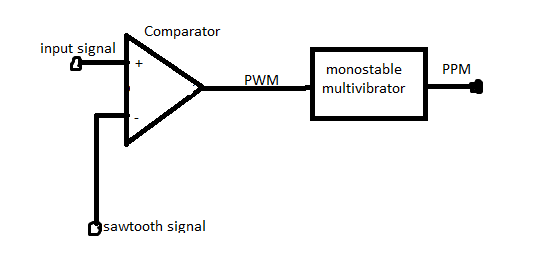Question
Question: Can we generate the PWM from PPM?...
Can we generate the PWM from PPM?
Solution
PWM is known as pulse width modulation. PPM is known as the pulse position modulation
The Pulse Width Modulation sends a narrow or a wide pulse within the interval, and the width of the pulse is the value.
Pulse Position Modulation sends a fixed amplitude pulse, but the timing of the pulse within the interval is the value.
Complete step-by-step solution:
We can generate the PWM signal from the PPM signal by using the following steps.
The reference pulse of a fixed period is generated from the incoming PPM waveform and SR flip flop is set by the reference pulse.
Due to the set-reset signals applied at the flip flop, we can generate the PWM signal as the output.
The PWM signal can be demodulated by using the PWM modulator.
From the comparator output, we can obtain the PWM signal then this output is given to the monostable multivibrator.
For each trailing edge of the PWM signal, the monostable multivibrator output goes high.
The trailing edge of the PWM signal continuously shifting with proportional to the modulating signal
The generated PPM pulses have the same amplitude and width. The below diagram explains the generation of PPM from the PWM signals.

Note: The PPM signal has good noise immunity because it has constant amplitude.
The transmitted power always remains constant because of this constant amplitude.
The PPM requires a large bandwidth for the transmission of undistorted pulses. The Position of the PPM pulses varies with concern to the reference signal.
